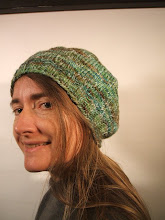To the Public:
“Green” is big today, but since the founding of my company in 1946 “Green” was part of our philosophy. From the beginning and today we utilize a system known as IPM, Integrated Pest Management. Simply put it means we carefully inspect our crops and our sheep herd for damaging pests. When the insects, fungi, or parasites start to cause noticeable damage, we then utilize appropriate measures to control damage, first utilizing mechanical means, second natural mans, and third, only if necessary, the least toxic chemical(s) to protect the health of plants and animals.
With our sheep, we started several years ago to reduce the use of chemical dewormers for internal and external damaging parasites by eliminating sheep that are susceptible to parasites and building our herd with parasite resistant sheep and thus, theoretically, eliminating the use of any dewormers. Where once we dewormed every six weeks in the summer, we are down to once or twice a year and only on infected animals. Our herd has been designated by the University of Delaware under a USDA Grant as one of the sheep herds being experimented to develop naturally parasite resistant sheep.
Now for our yarn, which we manufacture in our commercial size wool mill (1 of only 7 left in the U.S.A. ), we do not clean our wool through carbonization. This process gives the wool an acid bath, which I believe diminishes the integrity and quality of the wool. It does burn out all debris and makes a nice clean picture, but only by sacrificing the integrity and quality of the wool.
We use scouring—a means of non-abrasively cleaning the wool through washing, which retains the integrity and quality of the wool. The wool is alive and vibrant—not dead: however, with scouring, you may notice a piece or tow of straw or hay, which is easily removed. Also, we do not use any chemicals such as superwashing or moth proofing, which I believe also takes away form the quality and integrity of the wool.
In the past, we have put mothballs in the yarn bags during packaging. Once the yarn was exposed to the air, the odor and chemical dissipated. We have heard from some that the odor was not acceptable and thus of October 22, 2008 , we no longer use mothballs.
To prevent moth damage, we have installed mechanical units that from 9:00 p.m. to 6:00 a.m. throw mist throughout our wool mill and warehouse to kill any and all moths. It is odor free and perfectly organic—pyrethrin, which is certified by the government as 0 days for non-entry because it is non toxic.
Because we are so concerned about doing the right thing, our yarn and finished products can be easily dyed better than any other competitor’s product. Advisory: much of the yarn from the mega corporate distributors are buying their yarns from companies that are having their yarns made in China, etc., putting their European label on it making the product appear to be manufactured and produced in Europe. Think again friend!
When you purchase products from Cestari, Ltd., you know where the products come from. Do you really know where the products of the mega corporate distributors come from? Think about it. U.S.A. inspectors have little to no inspection powers in places like China , etc.
I just thought that you, the public, should know the truth.
Sincerely yours,
Francis Chester

1 comment:
These are the yarns I will use for the Kids Knit Kits that will be available in December.
Bente
Post a Comment